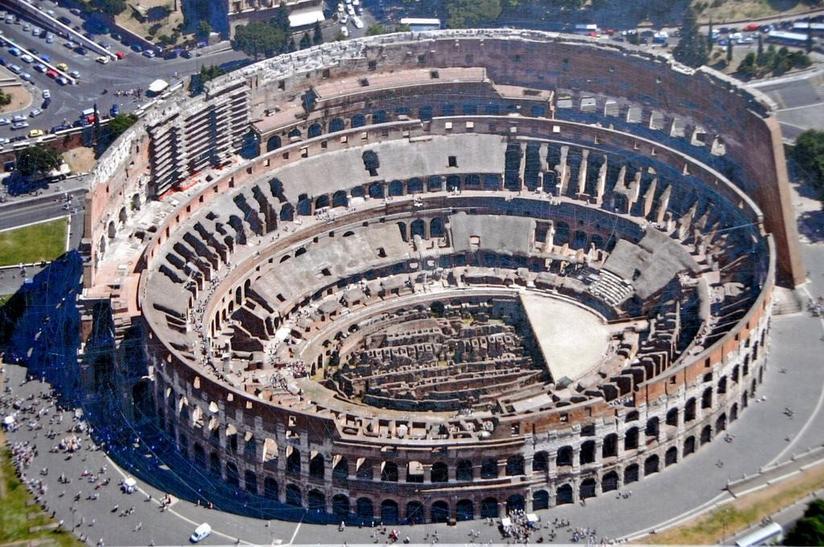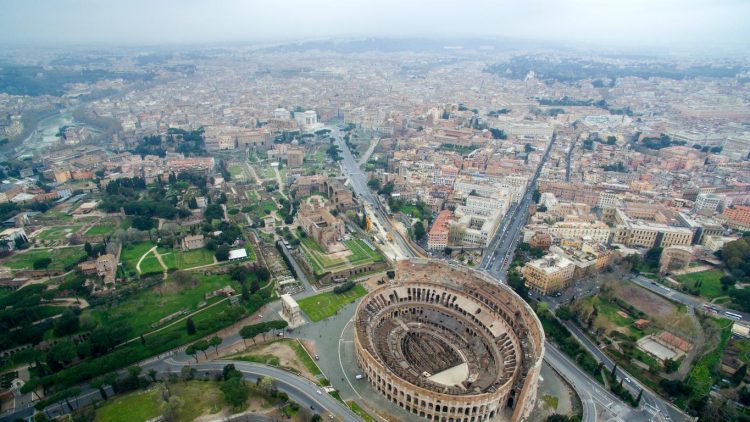Introduction: The Colosseum, Rome’s Timeless Icon
The Colosseum, or Flavian Amphitheater, is one of the most iconic landmarks in the world, drawing millions of visitors every year. Standing as a monumental testament to Ancient Rome’s architectural brilliance and cultural significance, the Colosseum is a symbol of both the grandeur and brutality of Roman civilization. Its vast, open arena once hosted gladiatorial combat, wild animal hunts, and mock naval battles, making it a center for both entertainment and political propaganda in its heyday.
Visiting the Colosseum is more than just stepping into a historical site; it’s an immersive journey through time. This guide will provide you with everything you need to know before you visit, from its history and architectural details to tips on how to make the most of your experience. Whether you’re a first-time visitor or a seasoned traveler, these insights will help you appreciate the full scope of this ancient wonder.
1. What is the Colosseum and Why Is It Important?
A Brief History of the Colosseum
The Colosseum was commissioned by Emperor Vespasian of the Flavian dynasty around 70-72 AD and completed by his son Titus in 80 AD. It was later modified by Emperor Domitian (81-96 AD). It was originally called the Flavian Amphitheater, in reference to the Flavian emperors who oversaw its construction.
The Colosseum was designed to hold up to 80,000 spectators, making it one of the largest amphitheaters ever built in the Roman Empire. The arena was used for gladiatorial contests, public spectacles such as animal hunts (venationes), mock naval battles (naumachiae), and executions. These events were not only forms of entertainment but also tools for the emperors to demonstrate their power, provide political propaganda, and distract the populace with free games.
The Colosseum is an architectural marvel that remains an enduring symbol of Ancient Roman culture. It is an example of Roman engineering at its finest, with advanced features such as a retractable roof (the velarium), sophisticated water drainage systems, and intricate underground chambers.
Cultural Significance
Beyond its function as a venue for bloodthirsty entertainment, the Colosseum was a tool for the Roman emperors to reinforce their power and influence over the population. Events held here were often grand in scale and extravagant, designed to awe the people into submission and loyalty. The gladiators, many of whom were slaves or prisoners of war, became symbols of courage, honor, and sacrifice—traits that resonated deeply with Roman ideals.
As a symbol of the Roman Empire’s grandeur, the Colosseum also represents the empire’s eventual decline. After the fall of the Western Roman Empire, the amphitheater fell into disrepair and was used for various purposes, including as a quarry for building materials and even as a Christian shrine.
2. When is the Best Time to Visit the Colosseum?
Peak Season vs. Off-Peak Season
The Colosseum is one of the most visited attractions in the world, so timing your visit can significantly impact your experience. Here’s a breakdown of the best times to go:
1. Peak Season (April to October)
- Pros: This is when the weather is warm, and all tours and events are in full swing. During these months, you’ll have access to everything the Colosseum has to offer, including extended hours, special exhibits, and evening tours.
- Cons: Expect long lines, crowded spaces, and higher prices for tickets and accommodations.
2. Off-Peak Season (November to March)
- Pros: Fewer tourists, which means you can explore the Colosseum at a more relaxed pace. The cooler weather also makes for more comfortable touring conditions. During these months, you may find better ticket availability and discounts.
- Cons: Some sections of the Colosseum may be closed due to weather conditions or maintenance. However, the majority of the main attractions remain accessible.
Tip: If you’re visiting during the summer, try to arrive early in the morning or later in the afternoon to avoid the heat and the crowds. The Colosseum is particularly crowded between 10:00 AM and 3:00 PM.
3. How Do You Get to the Colosseum?
Transport Options
The Colosseum is centrally located in Rome, making it easy to access from most parts of the city. Here are the best ways to get there:
1. By Metro
The Colosseo metro station (Line B) is the most convenient stop for reaching the Colosseum. It’s located directly in front of the monument and will drop you right at the entrance. The metro is fast and efficient, making it the best option for those traveling from other parts of Rome.
2. By Bus
Several buses stop near the Colosseum, including lines 75, 81, and 673. These buses are a good option if you’re traveling from areas outside of the central tourist zones.
3. By Walking
If you’re staying near the historic center of Rome, the Colosseum is within walking distance of many other attractions, including the Roman Forum, Piazza Venezia, and Piazza del Campidoglio. Walking gives you the opportunity to enjoy the streets of Rome and the surrounding ruins along the way.
4. By Taxi or Ride-Sharing
If you prefer more convenience or are traveling with a group, taking a taxi or using a ride-sharing service like Uber can be a quick option. However, be prepared for potential traffic, particularly during peak hours.

4. What Are the Different Ways to Experience the Colosseum?
General Admission: Exploring the Main Arena
The Colosseum’s most iconic features are the main arena and the spectator seating. With general admission, you’ll have access to the outer rings, the arena floor, and the upper levels of the structure. While this will provide a comprehensive view of the amphitheater, there are additional ways to deepen your experience.
Self-Guided Tour
A self-guided visit allows you to explore at your own pace. While the Colosseum provides written information in the form of signs and brochures, you can also download audio guides or apps for your smartphone to enrich your experience.
Guided Tour
For those looking for a more in-depth experience, a guided tour is a great option. Knowledgeable guides provide historical context, share anecdotes, and explain the significance of various sections of the Colosseum, including the hypogeum (the underground area) and the arena floor. They often allow visitors to see areas that are not accessible to those on general admission tickets.
Skip-the-Line Tickets
To avoid long lines at the entrance, you can purchase skip-the-line tickets. These tickets allow you to enter through a special entrance and can save you a lot of time, especially during peak tourist seasons.
Specialized Tours: Beyond the Basics
For a truly exceptional experience, consider one of the specialized tours offered at the Colosseum. These tours offer access to areas not usually open to the public and provide a unique perspective on the monument’s history and architecture.
Underground Tour (Hypogeum)
This tour takes you beneath the Colosseum to the hypogeum, a labyrinth of underground tunnels and chambers that housed animals, gladiators, and stage machinery. It’s a fascinating insight into the Colosseum’s workings during ancient times.
Arena Floor Tour
Some tours offer the chance to visit the arena floor, where gladiators once fought. Standing in the same place as these ancient combatants gives you a unique, almost surreal connection to the past.
Evening or Night Tours
The Colosseum offers evening and night tours, allowing you to experience the monument in a completely different light. The Colosseum is beautifully illuminated at night, and fewer visitors are present, making for a more tranquil and atmospheric experience.
5. What Can You Expect to See Inside the Colosseum?
The Arena Floor and Spectator Seats
The arena floor is the main focal point of the Colosseum. Here, gladiators fought brutal battles for the entertainment of Roman citizens. The seating tiers above the arena provided seating for different social classes, with the emperor sitting in the best position, at the very top of the arena.
The Hypogeum: The Underworld of the Colosseum
The underground chambers (hypogeum) were used to house gladiators, animals, and stage props. This area was equipped with complex systems of pulleys, trapdoors, and ramps that allowed for the dramatic entrance of combatants and wild beasts.
The Upper Levels and Views of Rome
The upper levels of the Colosseum offer stunning views of the surrounding city, including the nearby Roman Forum and Palatine Hill. From these heights, you can get a full sense of the Colosseum’s grandeur and understand its monumental scale.
6. What Are the Best Photography Spots at the Colosseum?
The Colosseum provides numerous opportunities for incredible photographs. Whether you’re capturing its exterior grandeur or snapping intimate details from the arena, here are some prime spots:
- The Colosseum’s Exterior: Capture the monument from the outside, especially during sunrise or sunset, when the light casts beautiful shadows on the ancient stone.
- Inside the Arena: From the arena floor, take wide-angle shots of the towering walls and arches that once housed tens of thousands of spectators.
- The View from the Upper Levels: The views from the upper levels provide a sweeping panorama of Rome’s ancient ruins and modern cityscape.
- The Hypogeum: The dimly lit underground chambers create an eerie, mysterious atmosphere that makes for dramatic photographs.
7. Practical Tips for Visiting the Colosseum
What Should You Wear?
- Comfortable Shoes: Expect to walk a lot and explore uneven surfaces, so wear sturdy, comfortable shoes.
- Weather Considerations: If visiting in summer, bring sunscreen and a hat. In winter, wear layers as the Colosseum can get chilly in the cooler months.
What to Bring?
- Water Bottle: The Colosseum can get hot, especially in the summer, so bring water to stay hydrated.
- Camera: Don’t forget your camera or smartphone to capture the stunning views.
- Valid ID: Students or EU citizens may get discounted tickets, so carry an ID if applicable.
Conclusion: Why a Visit to the Colosseum is a Must-Do in Rome
A trip to the Colosseum is more than just a visit to a historic site—it’s an experience that transports you back in time. Whether you’re marveling at its architectural grandeur, exploring its fascinating history, or imagining the ancient spectacles that once took place there, the Colosseum offers an unparalleled glimpse into Ancient Rome’s mighty empire.
By following the tips and insights provided in this guide, you can ensure that your visit to the Colosseum is enriching, educational, and memorable. Be sure to take your time, soak in the history, and appreciate the significance of this timeless symbol of Roman culture.





















